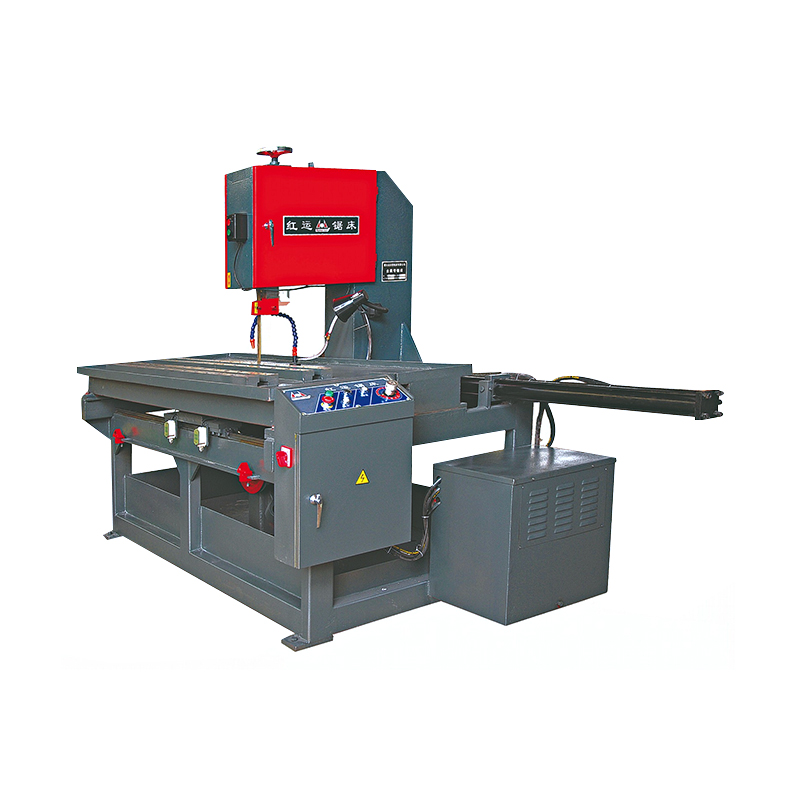How To Adjust The Vertical Band Saw If It Is Too Tight
Maintaining optimal blade tension is essential to ensure accurate cuts and prolong the lifespan of your machine. When the blade on your vertical band saw feels too tight, it's important to take corrective steps to avoid damage or safety risks. Whether you're using a benchtop metal cutting vertical band saw in a workshop or operating an automatic vertical band saw in a production environment, the following guide will walk you through the right process for a vertical band saw adjust.

1. Prioritize Safety First
Before making any changes, switch off the machine and disconnect it from the power source. This is especially crucial when handling high-powered equipment like an automatic vertical band saw. Wearing safety glasses and protective gloves will reduce the risk of injury during the vertical band saw adjust process.
2. Evaluate the Root Cause
A blade that's overly tight can result from excess tension, misalignment, or worn-out components. Begin by assessing the performance and listening for unusual noises when the machine is running. If you're working with a benchtop metal cutting vertical band saw, take note of blade vibration or resistance when cutting, as these are telltale signs of excessive tension.
3. Adjust Blade Tension
For any vertical band saw adjust procedure, locate the tension adjustment mechanism. This is typically a handwheel, dial, or lever near the top of the saw. Turn the adjustment slowly to reduce blade tension. On an automatic vertical band saw, digital controls may guide you through tension calibration more precisely. Regardless of the model, avoid releasing too much tension, which can cause blade slippage or poor tracking.
4. Inspect Blade Alignment
Blade alignment plays a major role in cutting performance. Ensure that the blade is running parallel to the fence and the saw table. If you're working with a benchtop metal cutting vertical band saw, adjust the blade guides to hold the blade centrally between the upper and lower wheels. In an automatic vertical band saw, check that the hydraulic or servo systems guiding the blade are calibrated correctly.
5. Clean and Maintain Blade Guides
Dirty or worn-out blade guides can cause binding and premature blade wear. As part of your vertical band saw adjust routine, inspect the guides and bearings. Clean them thoroughly and lubricate moving parts lightly. On a benchtop metal cutting vertical band saw, guides are typically accessible and simple to maintain. Automatic vertical band saw models may include enclosed guides that require partial disassembly for servicing.
6. Verify Table and Fence Alignment
A warped table or misaligned fence can result in poor cuts or binding. Make sure the cutting surface is level and square to the blade. During a vertical band saw adjust, check that the fence remains aligned throughout the cut stroke, especially on a longer automatic vertical band saw table.
7. Examine the Blade Condition
Even if the tension and alignment are ideal, a damaged or dull blade can still create problems. Check for signs of cracks, missing teeth, or warping. On both automatic vertical band saw and benchtop metal cutting vertical band saw models, it's best practice to replace the blade at the first sign of deterioration.
8. Test After Adjustment
Reconnect power and perform a test cut. Watch for smooth movement and consistent cutting pressure. If using a benchtop metal cutting vertical band saw, test on various thicknesses of metal. For an automatic vertical band saw, observe the full cutting cycle and ensure automation sequences run smoothly.
9. Refer to the Manual
Always consult your machine's manual before performing any vertical band saw adjust process. Each model varies, and the manufacturer's instructions are tailored to your equipment's unique features.
10. Seek Professional Help When Needed
If tension issues persist or you're uncertain about any adjustments, don't hesitate to reach out to a technician or your machine's manufacturer. This is especially advised for complex automatic vertical band saw systems that may have electronic calibration requirements.
By taking a careful, methodical approach to vertical band saw adjust procedures, you can ensure long-term efficiency, precise cuts, and safer operations—whether you're using a benchtop metal cutting vertical band saw or an advanced automatic vertical band saw system.

 English
English 中文简体
中文简体 русский
русский

